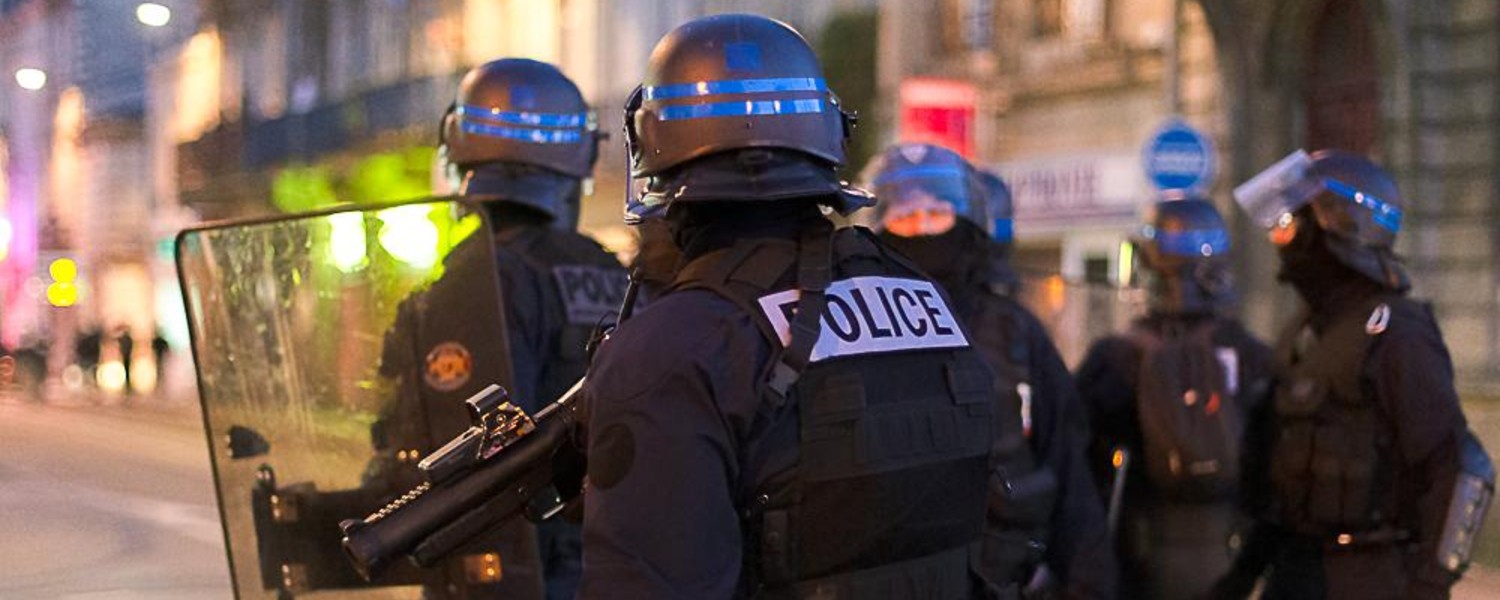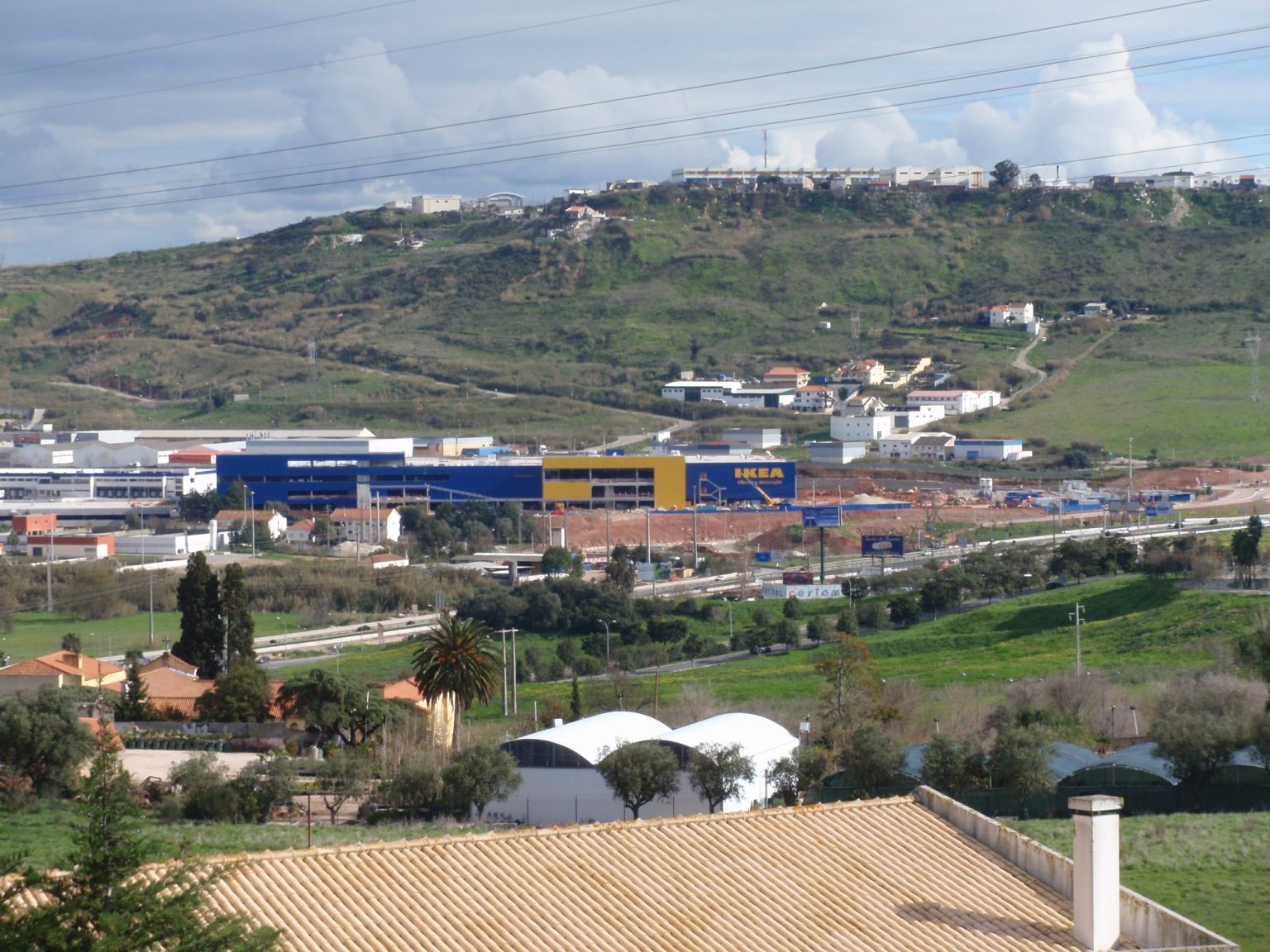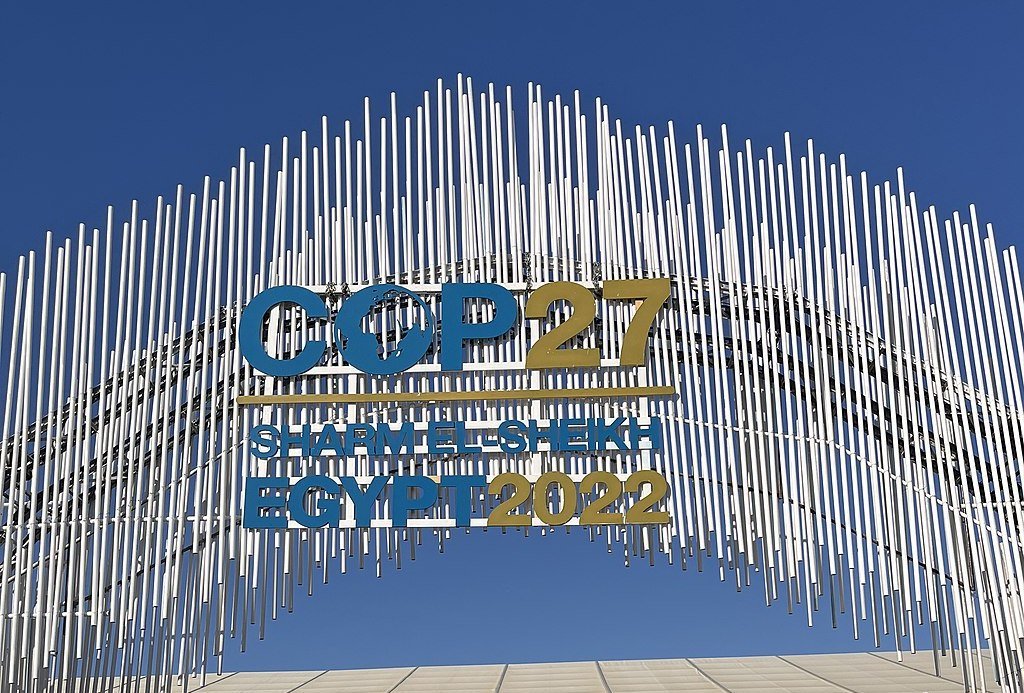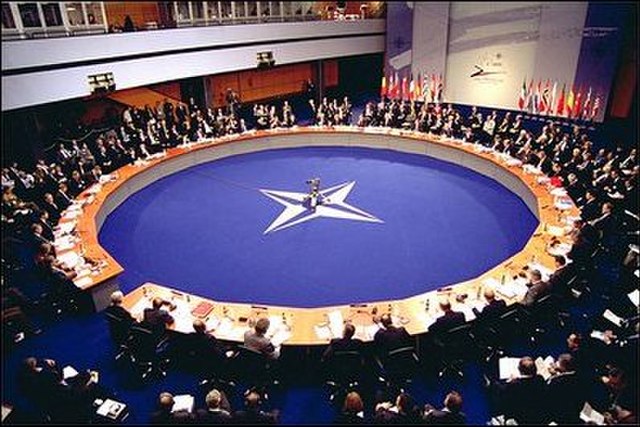This article was originally published at the Bulgarian left-wing platform dVersia on 30 September 2020.
Bulgaria has been deeply shaken by a revolt demanding the resignation of the government for more than 80 days. The protests are to a large extent peaceful. Sometimes protesters give flowers and water to the police who are guarding them, while others freely express their constitutional right to demonstrate. However, there have been a few occasions when the protests escalated, and reached moments of violence unheard of in Bulgaria. That is how, e.g. on 2 September 2020 during the parliamentary vote on the demands for changes in the Constitution, the police used pepper spray. There were people who lost consciousness. Some were taken to hospital. Journalists were beaten. The police squads attacked people who were peacefully sitting on benches in a nearby park. That police violence provoked outrage in society. The anger was followed by appeals to Europe to take notice and react to the developments in Bulgaria. However, in spite of the debates in the European parliament, in spite of the increasing coverage in international media, Western leaders have not responded with the desired reaction. The European Commission said that it couldn’t intervene, when there are problems in a member state.
Why can’t we expect the reaction we want from the West and why is “our return to the European road”, as proclaimed by a few protesters, not always something that we should aim for?
While Bulgaria still remembers the protest night of 2 September that went wrong, France has long interwoven violence into its police force’s DNA and is on the way to giving it even more rights to act against the population. Racism is part of the state apparatus, and the police corps traditionally votes for the extreme right party of Le Pen. If we recall the movie “La Haine” (The Hatred – 1995), we will understand the common, banalised violence which “the security forces” are able to exercise over teenagers from poor suburbs. In 2005 two children died after being electrocuted – they were being chased by policemen over a suspected robbery, and hid in a nearby power station. The massive protests that followed in one of the poorest suburbs of Paris and lasted for three weeks, led to the declaration of a state of emergency in the country. They caused 8000 burnt out cars and led to 2900 arrests. In 2016 Adama Traoré, aged 24, died in a police station, by suffocation. In January 2020 the delivery man Cédric Chouviat, aged 42, was killed by police, when they stopped him to check his identity documents. A recording showed that the victim screamed that he couldn’t breathe, after a police officer forced him to the ground.
The police have long been arbitrarily exercising violence upon the poorest and the most vulnerable part of the population. But after Emmanuel Macron came to power in 2017 this tendency started to spread to ever larger segments of the population in different forms. A tipping point was the beginning of the yellow vests protests in November 2018, which lasted for almost a year. They resulted in 11 deaths, 4000 wounded, including people blinded in one eye because of grenades and rubber bullets. The rising tension and the destruction of private property led to the appointment in March 2019 of Didier Lallement as the prefect of the police in Paris. He promised to restore order. The traditionally joyful Labour Day – 1 May 2019, became notorious. There was a feeling that the police were conducting a war against the citizens. The president insisted on tough answers against the so-called Black Block. That is why in the capital alone 7400 policemen were mobilised. Tear gas covered a large part of the city. Even the motorcade of the largest trade union, the CGT, was not spared from being attacked. 330 people were arrested. The prefect ordered the method of cage encircling to be used.
This meant that the protesters were encircled in closed spaces and fired against with tear gas, without leaving them any space to leave, as the law requires. In such a situation, a group of demonstrators broke the fence of a hospital, to escape from the approaching police and the water cannon that was firing at them. Some were so scared that they tried to enter the intensive care unit of the hospital. The internal minister described what the protesters did as “an attack”, before footage emerged that clearly showed the protesters’ fear and what actually happened.
Other leaked documents from a yellow vests protest in January 2020 showed that it was not the Black Block that caused the skirmishes with police, but rather the exact opposite – the mobile police brigades introduced by Lallement were wreaking havoc on the protesting masses.
In March 2020 – just before the lockdown because of the Covid-19 pandemic, the police started experimenting with new methods of tracking and control. In Bulgaria drones exist only in the discourse of power in the form of accusations of espionage against it. But in France drone surveillance became a “normal” practice of the state’s repressive apparatus. In order to keep people off the streets the police use drones with loudspeakers playing recorded messages ordering them to “Stay at home. You are not allowed to move in this area.”
Their usage was stopped after a decision of the Supreme Administrative Court in May, because of insufficient protection of personal data. A 2015 decree states that a drone can be used only if the prefecture has declared it will use it five working days in advance. But that does not apply to the police, if the circumstances and public order demand it. That is how 15 drones were able to fly over the airspace of Paris in the two months of lockdown. In April 2020 the Ministry of the Interior commissioned public procurement of 4 million euros for the acquisition of more than 650 drones. Officially, this order doesn’t have anything to do with the current crisis, but it is curious what it is related to, then.
The protests that broke out in the USA following the brutal murder of George Floyd have also stirred a reaction in France, where demonstrations were organised by the initiative committee “Justice for Adama Traoré”, whose death, caused by the police four years earlier, still remains unpunished. In the meantime the press published information about the existence of a WhatsApp group where police officers exchange racist slurs with one another, and a closed Facebook group with a membership of more than 8000 police officers from across the whole country, with similar content. In an answer, the minister of the Interior declared “zero tolerance” towards his employees who express racism and banned the infamous choke-hold in which the arrestee is suffocated – the one used during George Floyd’s murder.
The police unions reacted immediately, saying that the minister had betrayed them and organised a protest, where the employees symbolically threw their handcuffs on the ground. Footage from these protests was distributed manipulatively in the social networks in Bulgaria, in order to show a simulated police solidarity with the people, which in reality doesn’t exist at all. Following the protests, the authorities took a step back and again allowed the police to use the choke-hold.
A few days later during an address to the people, President Emmanuel Macron commented on the events in the USA, saying that in France no statue would be taken down, history would not be erased, but at the same time he would not tolerate anti-Semitic or racist acts. After stating his opposition to communism and support of law and order in the Republic, Macron declared he would protect the police and gendarmerie, which provide this order. That is why they deserved the nation’s support and recognition. That is how he missed once again the chance to reform the police system, plagued by racist attitudes. In fact he aimed to strengthen the police’s legitimacy.
After changes in the government in the summer, Gérald Darmanin, a protegé of Nicolas Sarkozy, became Minister of the Interior. Sarkozy himself had occupied that position previously.
On 24 July in an interview for the right-wing newspaper, Figaro, the newly-appointed minister declared that “the brutalisation of a part of the society” had to stop through the strengthening of state power. That interview would have passed unnoticed, had the word “brutalisation” not been used politically before. In 2013 the extreme right leader Marine Le Pen used this word in order to describe the increasing violence in the country – “derailment, complete loss of bases, destruction of everything that civilization has been building for centuries”. The use of this word makes it possible to avoid references to violence or criminality. The problems are defined in terms of the imaginary and the abstract. What is more, the Ministry of the Interior will begin publishing statistical data about crime levels in the country from October. This practice existed under Nicolas Sarkozy when he was Minister of the Interior and was strongly condemned as a “policy of figures”. Such an approach, focused upon results in the short term, only creates more tension on every level in the police. A report by the General Inspectorate of Administration condemns this approach as the cause of a large number of fake registered complaints.
On the occasion of the celebrations of the 150th anniversary of the creation of the Third Republic, Macron announced that starting from the autumn a legislative proposal against separatism will be put forward, because “the republic is fragile” and has to be protected. In a period of ever greater economic and health insecurity, the government is moving ever more to the right and is preparing for the presidential elections in 2022 by trying to attract the right-wing voters, instead of facing the most urgent issues. Imaginary problems are presented as real and imminent. The state machinery is mobilised to fight against them. The ever more unclear notion of “the republic” is used to justify what is being done. The political opportunist and former prime minister (in the times of Francois Hollande) Manuel Valls came out in support of Macron, with a claim that “the real problem is the fight against Islam”.
Shortly after, the ministry of the Interior published the new National Law Enforcement Scheme, which strengthens its control over the press and the citizens. According to the minister, when clashes take place during protests, we shouldn’t blame the police, but should realise that they are the victims. He told the police union that he has been and always will be on the side of the police: “There is no equality between the words of one who challenges the authorities and the authorities themselves… By definition, the word of the police officer is worth more than the word of others”. At this meeting the minister of the Interior announced that he would propose a law requiring the faces of policemen to be blurred when videos are distributed in the social networks and media.
Freedom of speech is being attacked in another way too. In a national scheme it is proposed that during protests journalists should have a press card and accreditation issued by the forces of law and order. According to French legislation a card is not required in order for somebody to prove he is a journalist. The proof is whether the majority of the person’s income comes from journalistic activity. Later the minister decided that a misunderstanding had taken place and the card would not be required during protests. However, when a crowd is being dispersed police will not make any exceptions for journalists, which means that there is a risk that they be beaten, while doing their job. Perhaps the goal is for them not to do it?
Minister Darmanin also encourages the use of drones and wants them to be used throughout the country, especially during protests, so that the reports of media which don’t report “the complexity” of the situation can be refuted. Weapons with rubber bullets remain in use, in spite of the many maimings caused by them. The severely criticised crowd dispersal grenades, which are used in no other European country but France, are simply replaced by others, which are almost as dangerous as the first ones.
The police officer just has to wear an identification number. This has been a legal requirement since 2014, which is rarely respected.
On 12 September at another protest of the yellow vests, who wanted to remind the government that their problems are not over at all, but on the contrary are being deepened, there were 275 arrests out of 2500 demonstrators. On 17 September 2020, ten police officers jumped out of a police van and stopped the videojournalist Gaspard Glanz, as if they were trying to demonstrate the application of the new National Scheme at the CGT trade union protest. Even though Glanz was at least 300 metres away from the motorcade of the demonstrators, he was arrested for “participating in a group in order to provoke acts of violence and destruction”. The reason for his arrest had more to do with the fact that he wasn’t carrying a press card with him. But the colleague who was with Glanz had one. For the first time in his career as a journalist Glanz witnessed how the police tried to erase the footage which he recorded with his GoPro camera.
Another attempt to open the eyes of society and the authorities is made by the newly-published book, Cop, in which the journalist Valentin Gendrot reveals the workings of the police system, after spending two years undercover as a police officer. He describes it as a force that protects a culture of racism and violence, which is not subject to punishment until the complete banalization of evil. Gendrot had to give false testimony, in order to protect other police officers from accusations of beating a teenager who was in custody. What the author describes as a clan system is a system in which the members protect one another. It leads to a shared feeling of impunity. People of colour, people of Arab origin and migrants are called systemically “motherfuckers”. At the same time Gendrot is shocked at how poorly trained and equipped the police are, and how poorly paid. The constant stress, enmity and violence which they face on a daily basis leads to depression and suicide, at levels which are disproportionally higher than the national average.
On 16 September 2020 the German authorities arrested 29 policemen for distributing photos of Adolf Hitler, of refugees in gas chambers, swastikas and other Nazi symbols. The police as an institution was never thought of as an organ for the protection of the people. It is more an institution that protects those in power from the people and protects private property. During the protests that erupted in the USA there were encouraging voices for the defunding of police so that other policies can be funded, that better resolve the problems which police violence suppresses, but doesn’t resolve. There’s no way that an impunity and racism-based system can be the main pillar of a society which aims to be democratic. That is why it shouldn’t surprise us that the police are using violence against Bulgarian protesters. We don’t have to give flowers to the policemen. Such acts only hide the real essence of that state apparatus. Paradoxically, sometimes the lack of budget assets could have a positive effect as is the case with Bulgaria. The old neoliberal logic of austerity doesn’t allow for the adequate equipment of the Bulgarian police, so it can’t beat us so brutally while we protest.
The Western European way may be more control, violence and surveillance, but that doesn’t mean that it has to be our way.
Photo: Policemen at a yellow jackets protest in France (source: Patrice CALATAYU from Bordeaux, France)
The Barricade is an independent platform, which is supported financially by its readers. Become one of them! If you have enjoyed reading this article, support The Barricade’s existence! We need you! See how you can help – here!











